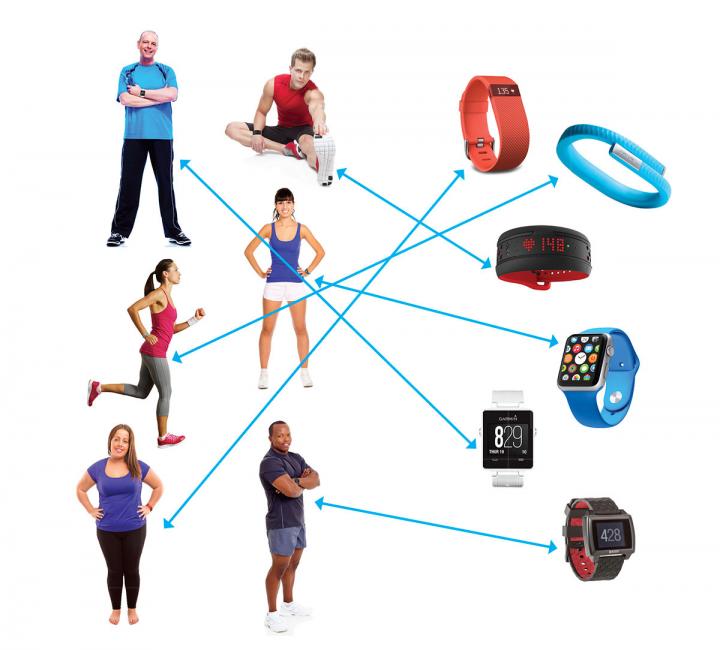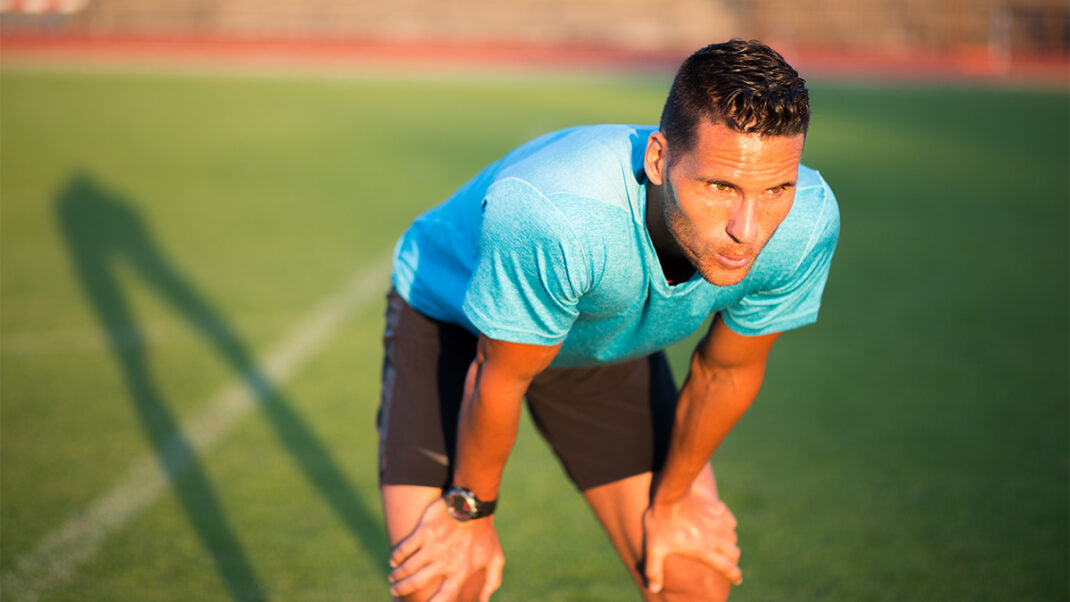Which Fitness Trackers Are Right for Your Clients?

As a fitness expert, you’ve likely had at least a couple, if not dozens, of fitness clients/participants ask you about
activity trackers: how they work, which ones are best, what features to look for. Do you feel 100% confident answering these questions? If you say no, you’re not alone.
Of the fitness pros recently surveyed by the American Council on Exercise, 72% reported that their clients consistently asked for insight and feedback about tracking devices. However, only 51% of respondents felt prepared to answer those questions (ACE 2016).
Fortunately, recommending the right tracker to a client or class participant is primarily a matter of understanding people’s
goals and preferences. It’s okay if you can’t recite every detail about every tracker on the market. Whew!
“Since the majority of activity trackers offer similar features, making a selection is often more about aesthetics and comfort,” advises Mike Z. Robinson, 2015 IDEA Personal Trainer of the Year and owner of MZR Fitness in San Luis Obispo, California. For example, one client might prefer to track the basics, like steps taken, with an unobtrusive, bracelet-like device (e.g., Jawbone® or some Fitbit® models). Another person might prefer a smartwatch capable of tracking activity, displaying messages, pushing notifications and more (e.g., Apple Watch, Basis Peak™, Fitbit Surge™).
When you’re thinking about tracker feedback, consider which data is most likely to
motivate individual clients and hold them accountable. Understanding the common features in many wearable activity trackers will help you confidently point clients to the devices most likely to help them reach their fitness goals.
Common Features in Wearable Activity Trackers
The major metrics in today’s wearable activity trackers include steps; calories and heart rate (continuous and active); and performance parameters such as duration, distance and pace. Here’s how they help specific clients.
WHAT’S TRACKED: STEPS
Good for clients who . . . could gain better insight into how much they move around each day (or how much they don’t).
The “steps taken” metric is one of the top bits of info Justin Seedman looks at with his clients. “By using this technology, clients become well aware of their low activity level,” says Seedman, a personal trainer, health coach and owner of JustinFit LLC in Broward County, Florida. “I find the steps-per-day metric is especially helpful when I’m working with clients who have
sedentary jobs and have a goal to be more active,” he notes. “Together we look at the data from the tracker, create goals and examine where they can increase activity levels.”
Bear in mind that trackers tend to provide information about quantity but not necessarily quality of steps. For this reason, you might not have a clear picture of whether you’re looking at steps accumulated while strolling through the mall and puttering around the house, or steps taken during a brisk walk to work plus an afternoon jog. Size up steps in conjunction with variables such as pace,
calories (see below) and/or workout metrics. Some devices—like the Fitbit Surge, with its “floors climbed” metric—shed more light on step intensity.
Seedman likes to make the step-count metric more meaningful. “I challenge clients by having them compete against other clients, their family members, co-workers and myself,” he remarks. Since he recommends one brand of tracker to all his clients, most people can join and view challenges within the tracker’s companion app (see sidebar). Once enrolled in a challenge within the app, clients can check other participants’ rankings on a leaderboard. “This increases the competitive nature of the challenge,” observes Seedman.
WHAT’S TRACKED: CALORIES
Good for clients who . . . want to lose weight and need to see firsthand how calories in and calories out affect weight loss goals.
You could use this metric to evaluate how daily calorie-burn changes, or doesn’t, from one day or week to the next. Devices that track workout
performance will also display how many calories a client burns during a dedicated workout, such as a cycling class, an outdoor run or a training session.
Combining this data with other variables will give you a good read on how much—and how intensely—clients move around every day. “The metrics I focus on with clients the most are how many calories they have burned, how many steps they’ve taken and how long they were in an active zone,” says Robinson, who finds that these metrics provide a more accurate picture of clients’
activity levels on any given day.
Since activity trackers illuminate what’s happening with calories out, but not calories in, you might suggest to clients who are interested in losing weight that they use a food-logging app, such as MyFitnessPal. Some tracker companion apps also include a food log.
WHAT’S TRACKED: HEART RATE
Good for clients who . . . wish to ensure appropriate exercise intensity, or for athletic clients who want to objectively gauge one workout against another to improve performance.
For more information on heart rate tracking and to see a chart detailing the features from popular trackers, please see “What’s the Best Activity Tracker for Your Clients?” in the online IDEA Library or in the April 2016 issue of IDEA Fitness Journal. If you cannot access the full article and would like to, please contact the IDEA Inspired Service Team at (800) 999-4332, ext. 7.
Amanda Vogel, MA
Amanda Vogel, MA, is a fitness professional and the owner of Active Voice, a writing, editing and consulting service for fitness professionals. She writes for IDEA, Health, Prevention, and Self, and has co-authored books on postnatal fitness and yoga. With a master's degree in human kinetics, Amanda has worked in the fitness industry for more than 15 years, including time spent as a program director and vice president for a chain of all-women clubs in Vancouver, British Columbia.






